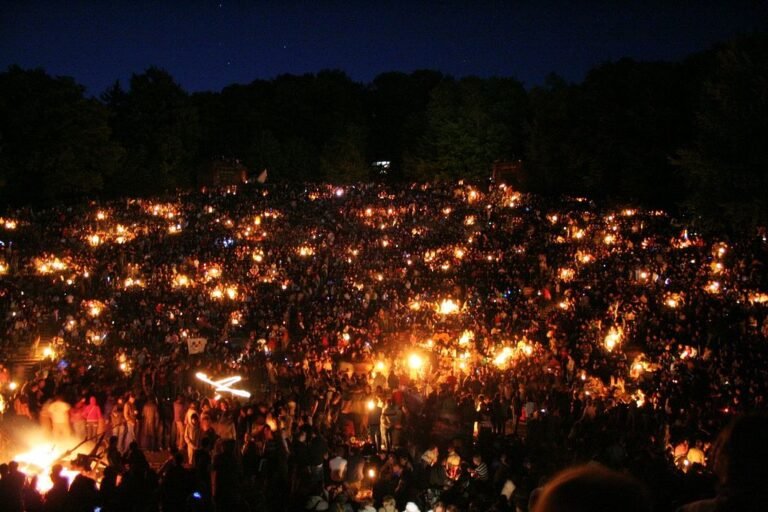Contents
ToggleIn short
Walpurgis Night (from the German Sankt Walpurgisnacht) is the eve of the Christian feast day of Saint Walpurga, an 8th-century abbess of France, and is celebrated on the night of April 30 and the day of May 1. This feast commemorates the canonization of Saint Walpurga and the removal of her relics to Eichstätt, both of which occurred on May 1, 870.
Walpurgisnacht, Saint Walpurga and the witches
Saint Walpurga was praised by Christians in Germany for fighting "the plague, rabies, and whooping cough, as well as witchcraft." Christians prayed to God through Saint Walpurga's intercession for protection from witchcraft, as Saint Walpurga was successful in converting the local population to Christianity.
In some parts of Europe, people still light bonfires on St. Walpurga's Eve to ward off evil spirits and witches. Others have historically made Christian pilgrimages to St. Walburga's grave in Eichstätt on St. Walburga's feast day, often receiving vials of St. Walburga's oil.
It is suggested that Walpurgis Night is linked to older May Day festivals in northern Europe, which also involved lighting bonfires at night, for example the Gaelic festival Beltane.
The Walpurgis Night festival is named after the English Christian missionary Saint Walpurga (c. 710–777/9). The daughter of Saint Richard the Pilgrim and sister of Saint Willibald, Saint Walpurga (also known as Saint Walpurgis or Walburga) was born in Devon, England, in 710 AD. Born into a prominent Anglo-Saxon family, Saint Walpurga studied medicine and became a Christian missionary in Germany, where she founded a double monastery in Heidenheim. As such, Christian artwork often depicts her holding bandages in her hands.
Following the evangelization of Saint Walpurga in Germany, the people there converted to Christianity from paganism. Furthermore, "the monastery became a center of education and" quickly became famous as a center of culture. "Saint Walpurga was also known for repelling the effects of witchcraft. Saint Walpurga died on February 25, 777 (some sources say 778 or 779), and her tomb, to this day, produces holy oil (known as Saint Walburga's oil), which is said to cure illness; Benedictine nuns distribute this oil in vials to Christian pilgrims who visit Saint Walpurga's tomb.
Walpurga's canonization and the moving of her relics to Eichstätt took place on May 1 in the year 870, leading to the feast of Saint Walpurga and her vigil, Walpurgis Night, being popularly observed on that date. She quickly became one of the most popular saints in England, Germany, and France. When the bishop had Saint Walpurga's relics moved to Eichstätt, "miraculous cures were reported as her remains traveled along the road." Miraculous cures were later reported by sick people who anointed themselves with a fluid known as Walburga's oil that flowed from the rock of her shrine in Eichstatt.
Social networks
Today, the Germanic and Saxon peoples celebrate Walpurgis night. Saint Walpurga is said to have protected the German people from plague, rabies, whooping cough and witches. This holiday dates back to pre-Christian times and is said to be close to the holiday Celtic Beltaine. #mythology #myth #legend #calendar 1TP5QApril 30 #walpurgis
Picture
